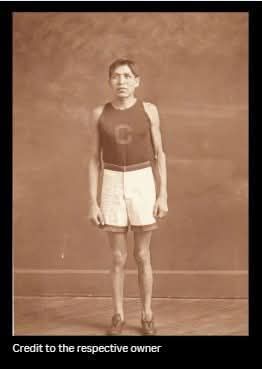On this day in Native history—July 8, 1912—a quiet runner from the Hopi Nation stepped onto the world stage in Stockholm, Sweden.
His name was Louis Tewanima, from the ancient village of Shungopavi in northeastern Arizona.
He wore no fancy shoes, had no coach or team of sponsors. He ran barefoot—fueled by heart, heritage, and the memory of the mesas back home.
The event was the very first Olympic 10,000-meter race.
Tewanima, representing both the United States and his Hopi people, moved across the track with relentless grace—and when the dust settled, he had earned the silver medal. To this day, no Native American has placed higher in that race.
But his story is more than a medal.
Tewanima ran with the spirit of a people who had been walking, running, and thriving across Turtle Island for generations. He trained by running up sandstone cliffs. He carried the heavy burden of displacement—sent to Carlisle Indian Industrial School—and turned it into strength.
He ran not to escape, but to honor.
More than a century later, his legacy still echoes—in every Native athlete who dares to dream, in every runner who draws strength from the land beneath their feet.
Louis Tewanima didn’t just win a race.
He carried a people forward.
